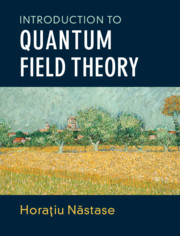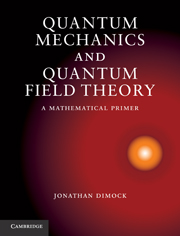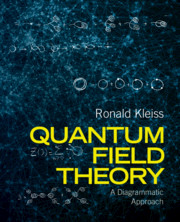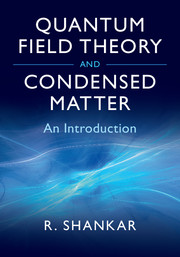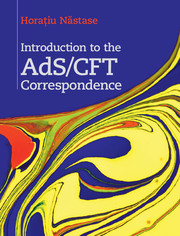Classical Field Theory
£67.00
- Author: Horaƫiu Năstase, Universidade Estadual Paulista, São Paulo
- Date Published: March 2019
- availability: In stock
- format: Hardback
- isbn: 9781108477017
£
67.00
Hardback
Other available formats:
eBook
Looking for an inspection copy?
This title is not currently available on inspection
-
Classical field theory predicts how physical fields interact with matter, and is a logical precursor to quantum field theory. This introduction focuses purely on modern classical field theory, helping graduates and researchers build an understanding of classical field theory methods before embarking on future studies in quantum field theory. It describes various classical methods for fields with negligible quantum effects, for instance electromagnetism and gravitational fields. It focuses on solutions that take advantage of classical field theory methods as opposed to applications or geometric properties. Other fields covered includes fermionic fields, scalar fields and Chern–Simons fields. Methods such as symmetries, global and local methods, Noether theorem and energy momentum tensor are also discussed, as well as important solutions of the classical equations, in particular soliton solutions.
Read more- Focuses on classical field theory aspects for electromagnetism and general relativity, allowing readers to focus on methods rather than physical applications
- Provides a bridge between classical mechanics and quantum field theory, helping the reader navigate the conceptual gap
- Includes up-to-date and comprehensive coverage of modern methods of classical field theory
Customer reviews
Not yet reviewed
Be the first to review
Review was not posted due to profanity
×Product details
- Date Published: March 2019
- format: Hardback
- isbn: 9781108477017
- length: 480 pages
- dimensions: 253 x 192 x 26 mm
- weight: 1.2kg
- contains: 37 b/w illus.
- availability: In stock
Table of Contents
Preface
Introduction
1. Short review of classical mechanics
2. Symmetries, groups and Lie algebras. Representations
3. Examples: the rotation group and SU(2)
4. Review of special relativity. Lorentz tensors
5. Lagrangeans and the notion of field
electromagnetism as a field theory
6. Scalar field theory, origins and applications
7. Nonrelativistic examples
water waves, surface growth
8. Classical integrability. Continuum limit of discrete, lattice and spin systems
9. Poisson brackets for field theory and equations of motion. Applications
10. Classical perturbation theory and formal solutions to the equations of motion
11. Representations of the Lorentz group
12. Statistics, symmetry, and the spin-statistics theorem
13. Electromagnetism and the Maxwell equation
Abelian vector fields
Proca field
14. The energy-momentum tensor
15. Motion of charged particles and electromagnetic waves
Maxwell duality
16. The Hopfion solution and the Hopf map
17. Complex scalar field and electric current. Gauging a global symmetry
18. The Noether theorem and applications
19. Nonrelativistic and relativistic fluid dynamics. Fluid vortices and knots
20. Kink solutions in ø4 and sine-Gordon, domain walls and topology
21. The Skyrmion scalar field solution and topology
22. Field theory solitons for condensed matter: the XY and rotor model, spins, superconductivity and the KT transition
23. Radiation of a classical scalar field. The Heisenberg model
24. Derrick's theorem, Bogomolnyi bound, the Abelian–Higgs system and symmetry breaking
25. The Nielsen–Olesen vortex, topology and applications
26. Nonabelian gauge theory and the Yang–Mills equation
27. The Dirac monopole and Dirac quantization
28. The 't Hooft–Polyakov monopole solution and topology
29. The BPST-'t Hooft instanton solution and topology
30. General topology and reduction on an ansatz
31. Other soliton types. Nontopological solitons: Q-balls
unstable solitons: sphalerons
32. Moduli space
soliton scattering in moduli space approximation
collective coordinates
33. Chern–Simons terms: emergent gauge fields, the Quantum Hall Effect (integer and fractional), anyonic statistics
34. Chern–Simons and self-duality in odd dimensions, its duality to topologically massive theory and dualities in general
35. Particle-vortex duality in 3 dimensions, particle-string duality in 4 dimensions, and p-form fields in 4 dimensions
36. Fermions and Dirac spinors
37. The Dirac equation at its solutions
38. General relativity: metric and general coordinate invariance
39. The Einstein action and the Einstein equation
40. Perturbative gravity: Fierz–Pauli action, de Donder gauge and other gauges, gravitational waves
41. Nonperturbative gravity: the vacuum Schwarzschild solution
42. Deflection of light by the Sun and comparison with general relativity
43. Fully linear gravity: parallel plane (pp) waves and gravitational shockwave solutions
44. Dimensional reduction: the domain wall, cosmic string and BTZ black hole solutions
45. Time dependent gravity: the Friedmann–Lemaitre–Robertson–Walker (FLRW) cosmological solution
46. Vielbein-spin connection formulation of general relativity and gravitational instantons
References
Index.
Sorry, this resource is locked
Please register or sign in to request access. If you are having problems accessing these resources please email [email protected]
Register Sign in» Proceed
You are now leaving the Cambridge University Press website. Your eBook purchase and download will be completed by our partner www.ebooks.com. Please see the permission section of the www.ebooks.com catalogue page for details of the print & copy limits on our eBooks.
Continue ×Are you sure you want to delete your account?
This cannot be undone.
Thank you for your feedback which will help us improve our service.
If you requested a response, we will make sure to get back to you shortly.
×

